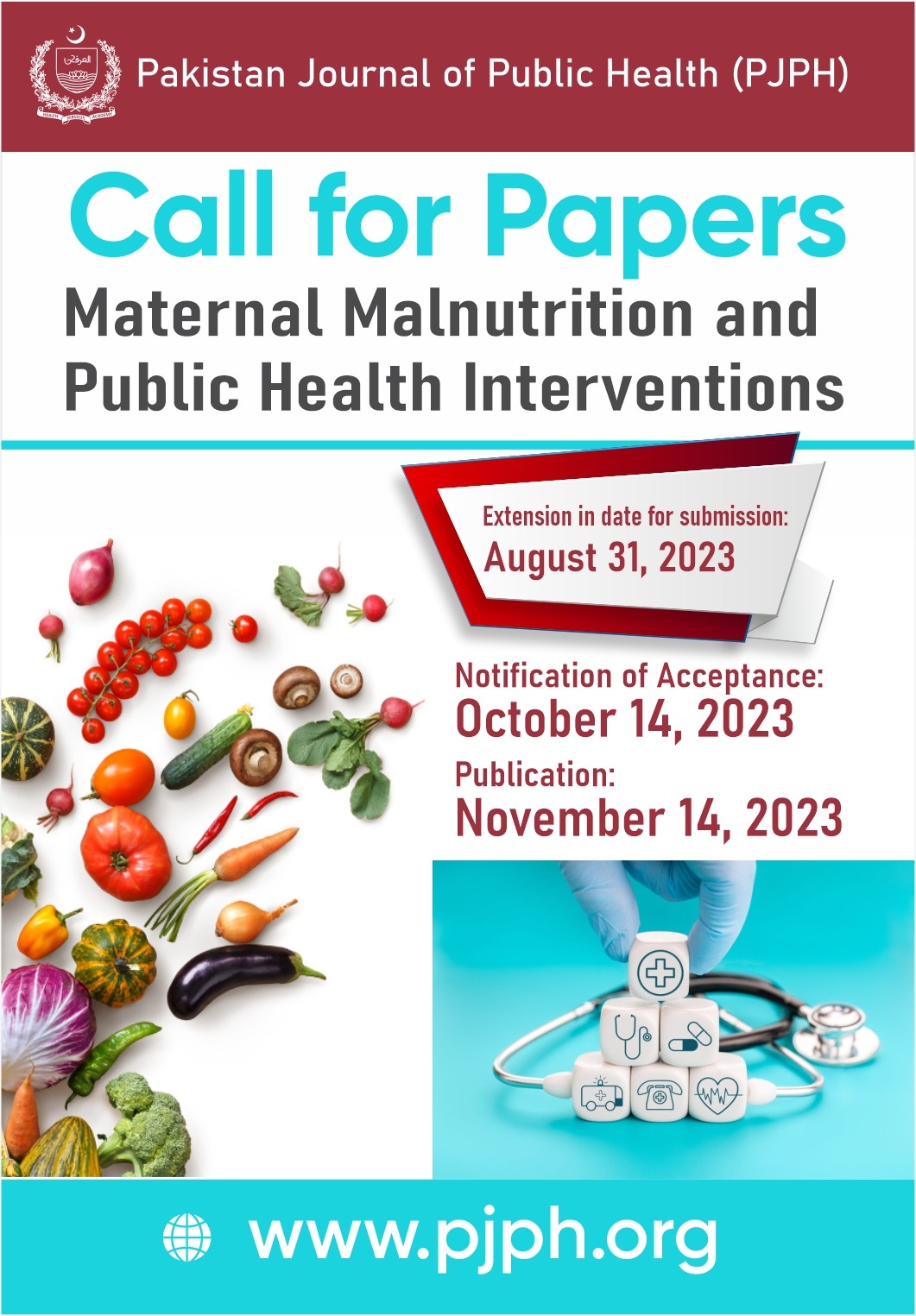EBOLA VIRUS THREAT: AWARENESS, EDUCATION AND PREPAREDNESS
DOI:
https://doi.org/10.32413/pjph.v9i1.267Keywords:
Ebola virus, spread, fear, risk factors, historyAbstract
Background: Ebola virus (EBOV) is a real threat and Ebola virus disease (EVD) can be transferred to any country. International flights in a country enhance the risk of an EBOV outbreak and its spread, especially in thickly populated cities. There is a great need for awareness among common persons, health professionals and decision-makers about EVD and preparedness to manage an outbreak.
Objective: The main objective of the study was to describe Ebola virus characteristics, mode of spread, risk factors, signs and symptoms, persistence, and preventions.
Methods: PubMed was searched with keywords, and 700 articles were found. Abstracts of all searched articles were reviewed. WHO and CDC websites were explored for relevant information.
Results: Contact with EVD patient's body fluids is the strongest risk factor. Although the incubation period of EBOV is from 2 to 21 days, while usually symptoms are developed between 4 and 10 days after exposure of Ebola virus. Similarities of signs and symptoms with other infectious diseases, mostly lead misdiagnosis. EBOV proteins reduce the human immune system's response to viral infections. In EVD survivors, Ebola virus can remain in semen, breast milk, ocular (eye) fluid, and spinal column fluid. It is very difficult to control and manage an outbreak of Ebola virus in areas of high population density areas.
Conclusion: Awareness, knowledge, and education about EVD among populations and clinicians can decrease fear, risk, and fatalities. Preparedness and training to HCWs can minimise the risk of EVD especially in thickly populated cities and areas of a country.





